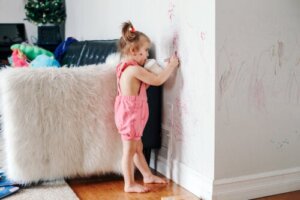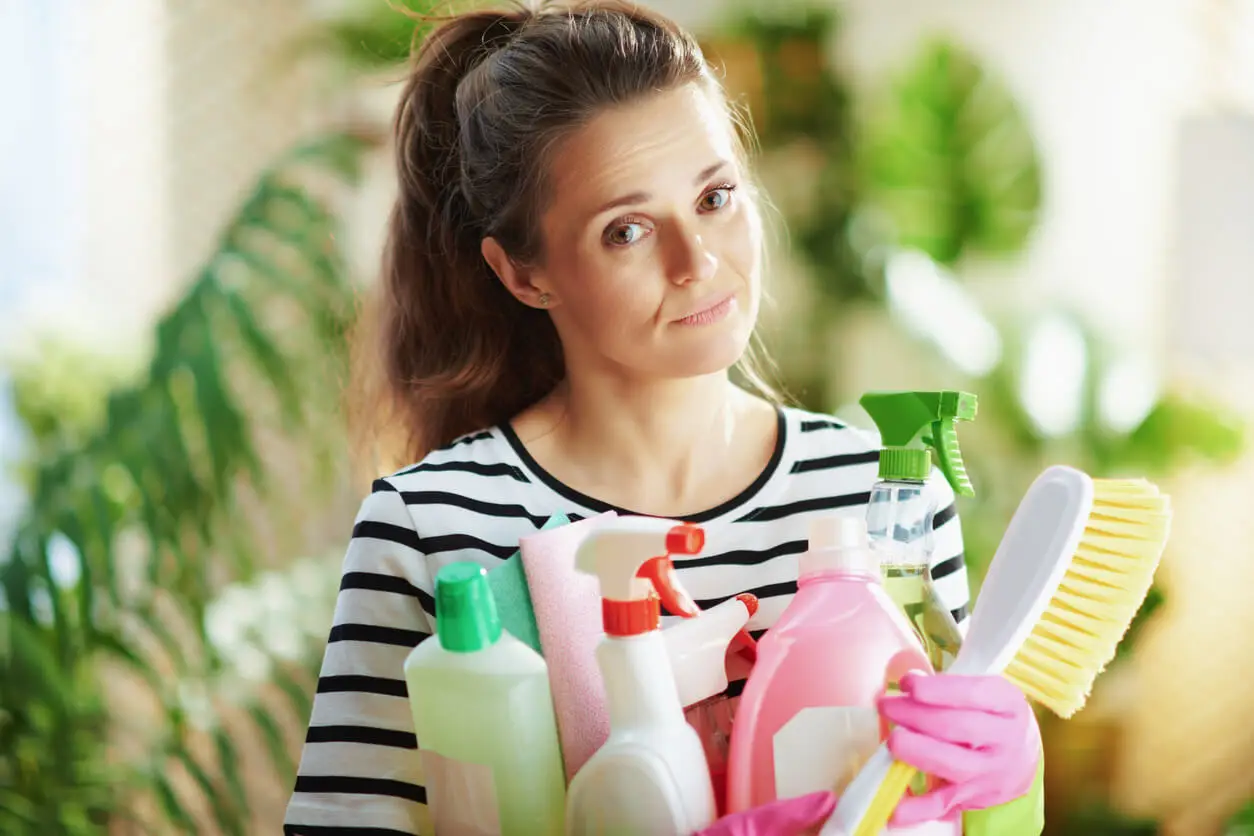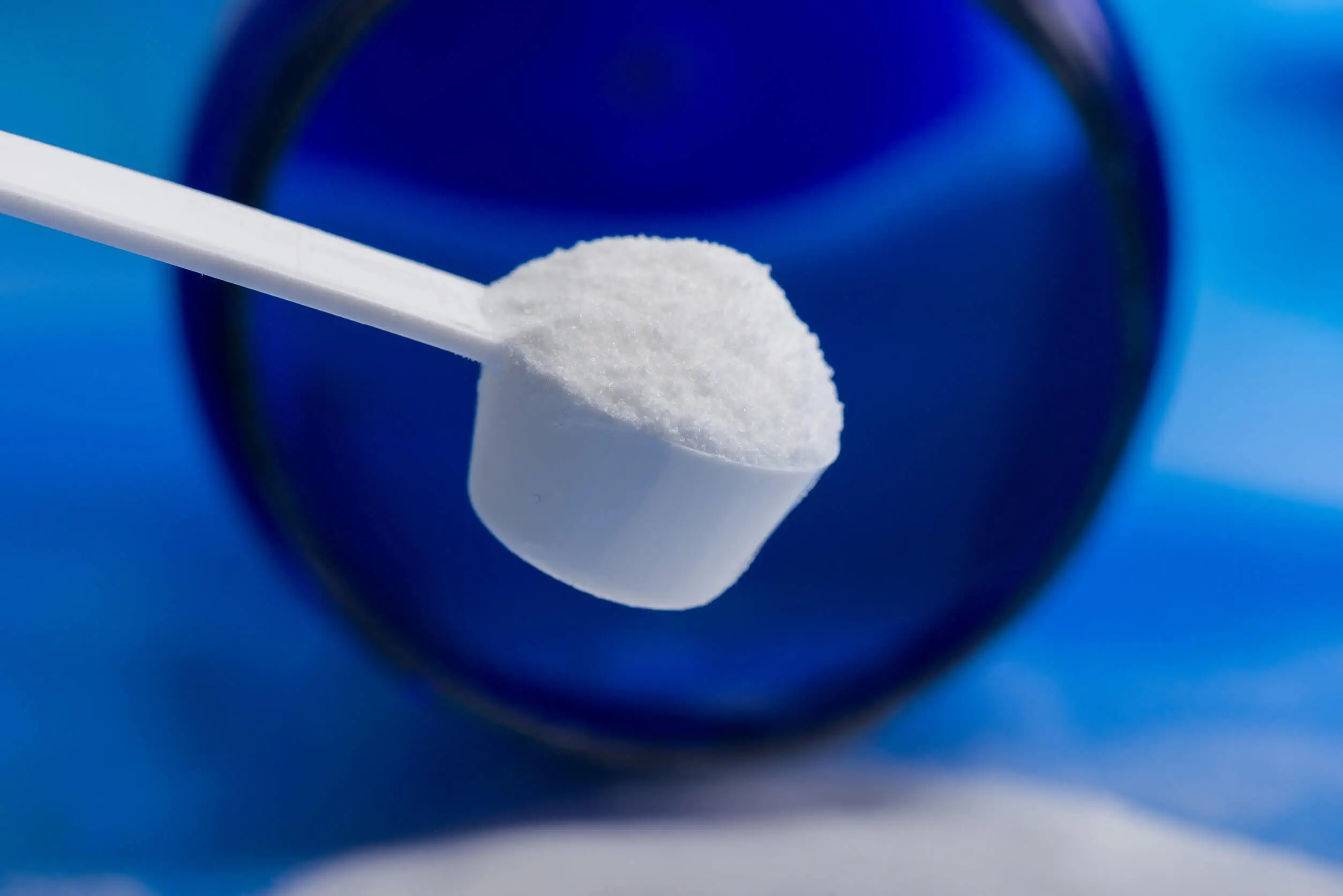7 Easy Tips for Cleaning a White Wall

White is a color that never disappoints or goes out of style. White paint in a home makes the rooms gain luminosity and a sensation of amplitude. However, white walls are somewhat complex to maintain. The smallest stain can be very noticeable in this type of decoration. Therefore, it’s advisable to take advantage of certain tips for cleaning a white wall in a simple and lasting way.
Fingerprints, furniture rubbing, children’s hands, or accumulated dust affect white walls more than any other. Because of this condition, it’s important to clean them with the correct methods. These can include everything from degreasing products to baking soda.
Why are these tips for cleaning a white wall important?
White walls give an elegant look to rooms, in addition to amplifying the space and being easy to combine. Their brightness is a feature applicable to many decorative styles.
However, to make these advantages work, they need to be kept clean. The biggest disadvantage of these walls is the ease with which they get dirty.
It’s enough to have a light switch to notice the finger stains around or identify small dirty areas resulting from the circulation of dust. Chairs, tables, or bookcases often generate scuff marks, while children can easily get them dirty if they play nearby.
How often should they be cleaned?
All these possibilities make the tips for cleaning white walls essential – a task that should be carried out during deep cleanings. It’s best done during the times when we clean and rearrange the space – that is to say, furniture is moved, paintings are taken down, and chairs are lifted.
In this way, it’s possible to take advantage of the opportunity to pass a dry cloth that removes the dust from the walls, even in the most difficult-to-access areas. It’s common for this type of cleaning to be carried out once or twice a month. However, white walls require that certain stains be removed immediately.
We think you may be interested in reading this, too: Coastal Grandma Decoration: What Is This Trend All About?
The best tips for cleaning a white wall
It’s common to get frustrated after painting a wall white and spot a stain soon after. Maintaining them is complex and requires immediate action. Therefore, it’s advisable to follow a series of tips for cleaning white walls.
1. Have the necessary tools
It’s not the same to remove a specific mud stain as it is to perform a general cleaning or dust removal. For this reason, it’s important to identify the type of sanitization to be performed. In the case of general cleaning, a sponge, paper napkins, a towel, and a microfiber cloth are enough.
For more complex stains, you can use baking soda, all-purpose cleaners, dish detergent, and a scrub brush. If you’re going to use cleaning products with mixtures between them, it’s advisable to put on latex gloves to protect the skin.

2. Acquire special products for sticky stains
In the case of stains related to food, drink, and any similar element, it’s advisable to apply some type of multipurpose cleaning product. Applying these degreasers with a clean cloth is usually effective in whitening walls with sticky stains.
It’s necessary to act quickly when these stains are generated.
3. Tips for cleaning a white wall: Clean from top to bottom
For white walls, as well as to avoid dust, it’s recommended to remove the dirt from top to bottom. In this way, everything accumulated on the top falls to the floor, and then the cleaning of the floor is carried out. To remove dust from white walls, simply wipe them with a damp microfiber cloth.
For the upper parts, the cloth can be attached to a broom or other similar item, which can be used to reach these spaces. It’s important to soak the item constantly. This prevents dirt from accumulating on the cloth and spreading all over the wall.
4. Magic Eraser
This is a tool that should only be applied in extreme cases, as the magic eraser is an abrasive object. It’s made of melamine foam and acts similar to sandpaper.
Therefore, it may damage some surfaces if applied with too much force. It’s not recommended on glossy walls. However, by dampening and gently scraping, the magic eraser is capable of removing complex stains.
5. Detergent for tough stains
In more complex cleaning instances, it’s possible to use dish soap or detergent. It’s a product that’s rarely used outside of its primary function, but it’s effective on surface stains that don’t come out with other cleaners.
To use it, put a drop of detergent on a sponge and apply it to the stain, rubbing gently until it foams. Then let it sit for a few minutes.
Once the wall has absorbed the product, go over the area with a microfiber cloth dampened with warm water. If the stain isn’t completely removed, repeat the process.
Like this article? You may also like to read: Oriental Chic: The New Trend for Interior Decoration
6. Baking soda
An all-purpose product that’s also effective for cleaning is baking soda. In the case of white walls, it should be applied with a method similar to that of detergent.
First, mix three tablespoons of baking soda and one tablespoon of water in a container. You should get a paste of sticky consistency.
Then, place it on the stain until it’s completely covered. Let it sit longer than the detergent and once it’s dry, rub it with a microfiber cloth.
It’s important that the cloth or paper towel is a little damp.

7. Tips for cleaning a white wall: Specific stains
Some marks are made by the frequent circulation of dust or rubbing against furniture, but there are also stains caused by occasional accidents:
- Fingerprints: It’s common for fingerprints to appear on walls near doors, key rings, or light switches. In general, these marks can be removed with all-purpose cleaners. It’s important not to wet the area or the cloths that you’re using so much. If you’re near a power circuit, turn off the electricity beforehand.
- Ink or blood stains: These stains are quite difficult to remove. Bleach or bleach may be effective. However, the white wall must not have decorative motifs, and the product must be diluted in water in the proportions indicated by the manufacturer. Apply with a cloth and protective gloves.
- Pencil marks: For this problem, there’s a simpler solution. Pencil marks can usually be removed with a simple eraser. A breadcrumb eraser will do the trick.
- Moisture: Stubborn moisture stains can also be removed using bleach. Apply it with a stiff-bristled brush and always wear a mask, along with hand and eye protection. The bleach must be diluted in at least three measures of water for each measure of bleach.
Be careful with movements
To effectively clean white walls and keep them in good condition, be careful not to spread the stains. Make gentle, circular movements with the product applied, either with a brush, a cloth, or a towel.
Don’t extend the scraping beyond the mark, as other areas of the wall may be affected. In the end, always remove the remains of water.
All cited sources were thoroughly reviewed by our team to ensure their quality, reliability, currency, and validity. The bibliography of this article was considered reliable and of academic or scientific accuracy.
- Daza-Corredor A, Viloria-Escobar JDJ, Rodríguez-Pacheco FL, Miranda-Terraza LF. Uso de productos de aseo y limpieza en hogares de Santa Marta: realidades y posibilidades para un consumo sostenible: realidades y posibilidades para un consumo sostenible. Jangwa Pana [Internet]. 30 de agosto de 2018 [citado 27 de septiembre de 2022];17(3):414-3. Disponible en: https://revistas.unimagdalena.edu.co/index.php/jangwapana/article/view/2525
- Llanqui Gutiérrez, Uriel , Irritantes químicos y prevalencia de asma y bronquitis crónica en los trabajadores de los servicios de limpieza de los establecimientos de salud de la región Puno, Perú. Revista de la Universidad Industrial de Santander. Salud [Internet]. 2015;47(1):69-73. Recuperado de: https://www.redalyc.org/articulo.oa?id=343839277009
- Paricaguán Morales, Belén María, Desarrollo de una pintura amigable al ambiente bajo la metodología taguchi. Revista INGENIERÍA UC [Internet]. 2010;17(2):27-37. Recuperado de: https://www.redalyc.org/articulo.oa?id=70721885005
This text is provided for informational purposes only and does not replace consultation with a professional. If in doubt, consult your specialist.








